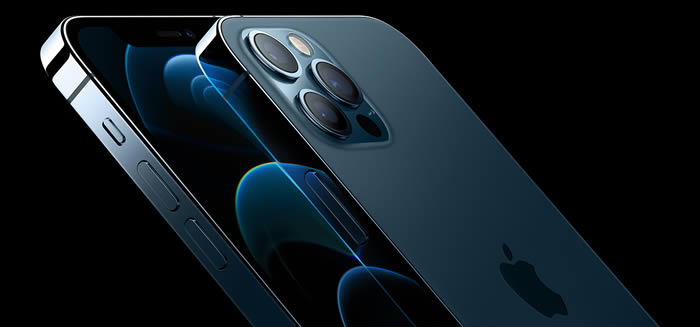
5G is the biggest and most important smartphone upgrade in a long time, and with 5G coverage now being widespread, it’s a near essential component of new phones – including new iPhones.
So if you’re already an iPhone owner or you’re considering buying one, then you might be wondering whether the phone you have – or the one you want – supports 5G.
The good news is that at this point the answer to both of those questions is probably yes, as all recent iPhones work with 5G, including the iPhone 16, iPhone 16 Plus, iPhone 16 Pro, iPhone 16 Pro Max, iPhone 16e, iPhone 15, iPhone 15 Plus, iPhone 15 Pro, iPhone 15 Pro Max, and iPhone SE (2022), among many others.
But not all older models do, and in fact Apple was quite late to start offering 5G phones, so you don’t have to go too far back to find 4G iPhones (see full details in the table below).
This split between 4G and 5G iPhones means your choice of iPhone has never mattered more – though since the launch of the iPhone 16 range and the iPhone SE (2022), the number and variety of 5G models is now high.
Below you’ll find full details of Apple’s 5G iPhones, along with details of the mobile data speeds of all other recent iPhones, and some of the key alternative 5G phones to consider if you’re not set on Apple.
Which iPhone models support 5G?
See all 5G iPhone deals
The iPhone 16 range, iPhone 15 range, iPhone 14 range, iPhone SE (2022), iPhone 13 range and iPhone 12 range all support 5G, meaning you can get 5G with the iPhone 16, iPhone 16 Plus, iPhone 16 Pro, iPhone 16 Pro Max, iPhone 16e, iPhone 15, iPhone 15 Plus, iPhone 15 Pro, iPhone 15 Pro Max, iPhone 14, iPhone 14 Plus, iPhone 14 Pro, iPhone 14 Pro Max, iPhone SE (2022), iPhone 13, iPhone 13 Pro, iPhone 13 Pro Max, iPhone 13 Mini, iPhone 12, iPhone 12 Mini, iPhone 12 Pro, and iPhone 12 Pro Max.
None of the previous iPhone models support 5G and they will never be able to. That includes the iPhone 11, iPhone 11 Pro, iPhone 11 Pro Max and the iPhone SE 2020.
However, it’s almost guaranteed that all future iPhones will support 5G, with the next models expected to be the iPhone 17 and its siblings, though these aren’t expected until September of 2025.
Apple’s first 5G phones also arrived a lot later than Android rivals, which might seem odd, but below you’ll find an explanation for why that is, along with all the other information you need about 5G on the iPhone.
5G Coverage Checker
Find out which networks have launched 5G in your area,
or when it is coming to your area.
What maximum speeds do the different iPhones support?
The iPhone 12 range all support 5G as noted, with Apple claiming that they can theoretically reach speeds of up to 4Gbps in real-world conditions. The iPhone 16, 15, 14 and iPhone 13 ranges also support 5G and presumably have the same theoretical speeds, though Apple hasn’t confirmed at the time of writing.
Apple additionally claimed that the iPhone 12 range supported more 5G bands than any other smartphone at the time of their launch, and the iPhone 16, 15, 14 and 13 ranges support even more than that – meaning these phones should be able to tap into the full 5G potential of more networks across the world.
The iPhone SE (2022) meanwhile likely offers slightly slower 5G – Apple doesn’t list speeds but does say that it offers ‘5G cellular’ connectivity and 2x2 MIMO. The other 5G iPhones meanwhile offer ‘Superfast 5G cellular’ connectivity and 4x4 MIMO, with MIMO being a technology that can multiply the capacity of a connection. Check out our ‘what is massive MIMO technology?’ guide for full details.
As for the older models, none of them support 5G, but the iPhone 11 Pro and iPhone 11 Pro Max do support Gigabit LTE, which is a very fast form of 4G, which in this case uses 4x4 MIMO (meaning a greater number of antennas than standard 4G) and is capable of attaining peak download speeds of 1.6Gbps, or 1,600Mbps.
Technically the iPhone 11, iPhone XS and iPhone XS Max are capable of similar, but Apple has made additional speed improvements for the 11 Pro models, having moved on from Cat 16 (which tops out at 1Gbps) to Cat 19.
This makes the iPhone 11 Pro range theoretically significantly faster than the iPhone XS range, as well as the iPhone SE (2020) – which is also Cat 16 – and several times faster than the iPhone X and iPhone XR, both of which pack lesser Cat 12 LTE modems.
This elevated performance is starting to enter the orbit of 5G. However, real world speeds are still typically far lower both than the maximum theoretical speeds offered by these iPhones, and than current 5G speeds.
Plus, 5G speeds are expected to improve over time, as infrastructure improves and networks acquire more 5G spectrum at auction. 5G right now will typically be at least several times faster than even the speeds you’re likely to get from the iPhone 11 Pro, as our 5G speeds guide explains, and in future the gulf will only widen.
So if you want truly next-gen speeds, you need to opt for an iPhone 16, iPhone 16 Plus, iPhone 16 Pro, iPhone 16 Pro Max, iPhone 16e, iPhone 15, iPhone 15 Plus, iPhone 15 Pro, iPhone 15 Pro Max, iPhone 14, iPhone 14 Plus, iPhone 14 Pro, iPhone 14 Pro Max, iPhone SE (2022), iPhone 13, iPhone 13 Pro, iPhone 13 Pro Max, iPhone 13 Mini, iPhone 12, iPhone 12 Mini, iPhone 12 Pro, or iPhone 12 Pro Max.
Apple iPhone 15 Pro Max 5G 256GB
150GB Data
Unlimited Mins
Unlimited Texts
£29.22 a month36 month contract
Apple iPhone 15 Pro Max 5G 256GB
150GB Data
Unlimited Mins
Unlimited Texts
£30.75 a month36 month contract
Apple iPhone 15 Pro Max 5G 256GB
5GB Data
Unlimited Mins
Unlimited Texts
£31.00 a month36 month contract
What about 5G Standalone?
5G Standalone is one of the latest developments in 5G. It essentially means a network built from the ground up for 5G, rather than one that also has legacy 4G components. When 5G first launched, all of the UK’s networks were offering the latter, but they’ve now begun upgrading their infrastructure to 5G Standalone.
This comes with numerous potential benefits, including better coverage and signal, lower latency, higher speeds, and more reliable networks. However, not all phones work with 5G Standalone.
The good news though, is that if you have a 5G iPhone, it should also work with 5G Standalone – at least on paper. So in other words if you have an iPhone 12 onwards you should theoretically be set, but in practice it’s not that simple.
For one thing, you still need to be on a network that supports 5G Standalone, which at the time of writing means EE, Vodafone, or O2.
You also need to be in an area with 5G Standalone coverage to take advantage of it, and you need for this network to specifically support your phone. At the time of writing, as far as iPhones go that limits you to the iPhone 16 series on Vodafone, the iPhone 15 and 16 series on EE, and the iPhone 16 and 15 series on O2.
We’d assume that all future iPhone models will also support 5G Standalone on the networks that offer it, and some older models may gain support eventually too, but we can’t be certain, so check the links above for up to date compatibility lists.
Three and the various MVNOs (mobile virtual network operators, like Giffgaff and Lebara) will likely offer 5G Standalone eventually too, but they don’t at the time of writing.
And note that in addition to the above 5G Standalone requirements, some networks also only offer it on certain plans, so check that before purchasing. You may need a new SIM card too, and you may also need to manually enable 5G Standalone on your phone once you’re on a compatible plan. To do this, head to Settings > Mobile Service > Mobile Data Options > Voice & Data, and look for a ‘5G Standalone’ toggle.
Why did Apple take so long to launch a 5G iPhone?
The fact that we didn’t get a 5G iPhone until late 2020 wasn’t that surprising. While Apple often leads the way with its design innovations, it’s famously slow to adopt new third-party connection standards. Historically, the company tends to wait until new standards are relatively mature and well on their way to mass-market adoption before it considers implementing them.
Apple’s handling of the switch to 3G and 4G provides ample evidence of this. The company didn’t equip the first iPhone with 3G connectivity when it launched in 2007, despite the fact that the first commercially available 3G networks had gone live globally in 2002 and 2003. It wasn’t until the launch of the appropriately named iPhone 3G in 2008 that Apple adopted the by then well-established mobile network standard.
Apple was similarly late to the party when it came to 4G. By the time the 4G-ready iPhone 5 hit the market in 2012, consumers had already experienced around two years of 4G Android phone releases.
Even the iPhone XS with its Cat 16 Gigabit LTE support arrived a good year and a half after the Samsung Galaxy S8 did likewise, and the iPhone 11 Pro didn’t push things that much further.
On top of which, Apple spent much of 2018 and 2019 in legal tussles with Qualcomm – the company that makes the 5G modems for the initial 5G iPhones. That’s all settled now, but may well have delayed things. As might the ongoing coronavirus pandemic.
What other 5G phones are there?
While only the iPhone 16 range, iPhone 15 range, iPhone 14 range, iPhone SE (2022), iPhone 13 range and iPhone 12 range support 5G, there’s a whole lot of 5G Android phones, with more landing all the time.
These include the Samsung Galaxy S25, Samsung Galaxy S25 Plus, Samsung Galaxy S25 Ultra, Samsung Galaxy S24, Samsung Galaxy S24 Plus, Samsung Galaxy S24 Ultra, Samsung Galaxy S23, Samsung Galaxy S23 Plus, Samsung Galaxy S23 Ultra, Samsung Galaxy S22, Samsung Galaxy S22 Ultra, Samsung Galaxy Z Fold 6, Samsung Galaxy Z Flip 6, Samsung Galaxy Z Fold 5, Samsung Galaxy Z Flip 5, Samsung Galaxy Z Fold 4, Samsung Galaxy Z Flip 4, Samsung Galaxy Z Fold 3, Samsung Galaxy Z Flip 3, OnePlus 12, OnePlus 11, OnePlus 10 Pro, OnePlus Nord 2, Huawei Mate 40 Pro, Xiaomi 14, Xiaomi 13, Xiaomi 13 Pro, Google Pixel 9, Pixel 9 Pro, Pixel 9 Pro XL, Pixel 9 Pro Fold, Pixel 8, Pixel 8 Pro, Google Pixel Fold, Google Pixel 7, Google Pixel 7 Pro, Google Pixel 6, Sony Xperia 1 VI, Sony Xperia 5 V, Motorola Edge 20 Pro, Moto G 5G Plus, Oppo Find X5, Oppo Find X5 Pro, and many others – including some older, lower end and more niche handsets than the examples listed.
In fact, most mid-range and high-end Android phones now launch with 5G support, and many cheap ones do too, so it’s almost become a standard feature on recent handsets.
New phones are landing with 5G all the time too.
Compare 5G phone deals
Should I buy a 5G iPhone?
If you’re a fan of the iPhone and have 5G coverage where you live and/or work then definitely. Even if you don’t have 5G coverage where you are now, if you’re planning to upgrade it’s worth getting a 5G phone so you’re future-proofed, and with all the latest iPhones supporting 5G they’re the obvious option to upgrade to.
The only reasons not to buy a 5G iPhone are if you’re happy with Android, happy with 4G, or want to save money.
There are many great 5G Android phones, as noted above, so you have loads of other options if you’re open to them. Some of them are also cheaper than even the iPhone SE (2022) – we’re thinking phones like the OnePlus Nord 2 and Moto G 5G Plus, so they could also help on the saving money front.
If you’re more than happy with 4G meanwhile, you could consider the relatively affordable iPhone SE (2020), but most flagships and many mid-rangers now come with 5G, so whether you’re buying Apple or Android you don’t necessarily have to spend any extra to get it.














